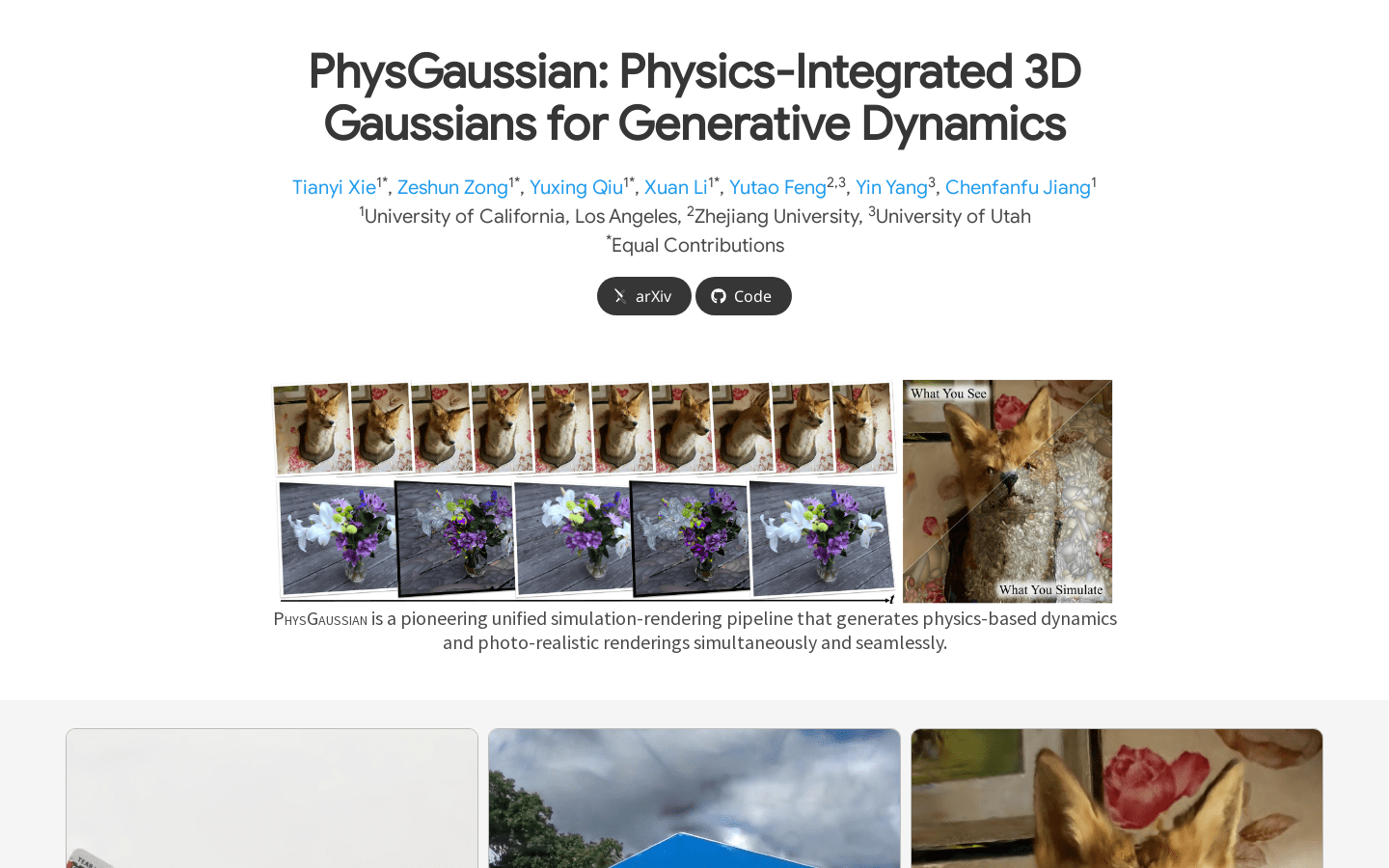










Physgaussian
Physgaussian:Physics-Integrated 3D Gaussian Dynamics Framework
Tags:AI image generationAI 3D Tools AI image generation Dynamics Open Source Physics Rendering Simulation Standard PicksOverview
PhysGaussian represents a groundbreaking advancement in the field of unified simulation and rendering pipelines. This innovative framework effectively integrates physics-based dynamics with photorealistic visual rendering, offering a seamless solution for complex simulations. At its core lies a custom implementation of the Material Point Method (MPM), which intelligently merges 3D Gaussian kernels with meaningful physical properties such as motion deformation and mechanical stress. These elements evolve dynamically according to principles of continuum mechanics, enabling accurate simulation of material behavior.
The system’s standout feature is its unified approach to physics and rendering. Both components utilize identical 3D Gaussian kernel representations, eliminating the need for conventional geometric structures like triangular meshes or tetrahedral grids. This eliminates the typical challenges associated with meshing techniques such as Marching Cubes, thereby aligning perfectly with the principle of “what you simulate is what you see.” This integration not only enhances efficiency but also ensures consistent results across simulations and visualizations.
Target Audience
PhysGaussian is designed for users seeking cutting-edge solutions in physics simulation and realistic rendering. The primary beneficiaries include:
–
Researchers and Academics
Investigators in computational mechanics, computer graphics, and related fields will find PhysGaussian invaluable for advancing their research on material simulation and visual realism.
–
Game Developers
Developers aiming to create immersive experiences with realistic physics and visuals can leverage this framework to streamline their development processes.
–
Visual Effects Artists
Professionals in VFX industries can utilize PhysGaussian for creating more accurate and visually stunning simulations, particularly in scenes involving complex materials and dynamic interactions.
Key Features
Physics-Based Dynamics Simulation
PhysGaussian excels in simulating a wide range of physics-based phenomena, including rigid body dynamics, fluid-structure interaction, and deformable object behavior. The integration of MPM with 3D Gaussian kernels ensures accurate representation of mechanical properties while maintaining computational efficiency.
Realistic Visual Rendering
The framework delivers photorealistic rendering by directly mapping the simulated physics data into visual outputs. This eliminates the need for intermediate geometric representations, ensuring that the rendered visuals accurately reflect the underlying physical processes.
Broad Material Applicability
PhysGaussian supports a diverse array of material types, from rigid solids to flexible tissues and fluids. Its adaptive nature allows it to handle different material properties seamlessly, making it suitable for various industries including gaming, film, and scientific visualization.
























